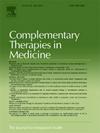Long-term symptom recurrence and functional outcomes with Chinese ointment massage, Tuina, and combined acupuncture for knee osteoarthritis: A 24-month multicenter real-world study in China
IF 3.5
3区 医学
Q1 INTEGRATIVE & COMPLEMENTARY MEDICINE
引用次数: 0
Abstract
Purpose
Compare long-term efficacy and recurrence of Chinese ointment(Co) massage, Tuina, and combined acupuncture for knee osteoarthritis (KOA).
Method
A multicenter, prospective, observational real-world study was conducted in multiple cities in China. 2143 KOA patients (83.76 % female) were prospectively assigned by preference to Co (n = 312), Tuina (n = 403), Co+acupuncture (n = 237), or Tuina+acupuncture (n = 1362) groups. Treatments involved 5–10 sessions. The Visual Analog Scale (VAS) assessed the average degree of knee joint pain, while the Western Ontario and McMaster University Osteoarthritis Index (WOMAC) and Lequesne Index evaluated knee joint dysfunction in terms of functionality and severity. The 2 years recurrence rate of KOA was also calculated.
Results
All groups showed significant post-treatment WOMAC, VAS, and Lequesne score reductions. The Co group had the lowest VAS scores at 2–10 months. Recurrence rates (lowest to highest) were Co group, Tuina group, Tuina+acupuncture group, Co+acupuncture group. The overall maximum recurrence rate was 33.97 % at 2 years, stabilizing after 18 months. KL grade II patients had the best long-term outcomes (recurrence 16.16 %-30.85 % over 2–24 months). No serious adverse events occurred.
Conclusions
Traditional Chinese medicine (TCM) conservative treatments (Co therapy, Tuina, and combined acupuncture) demonstrated safety for KOA management. Patients with lower KL grades (0-III) derived greater clinical benefit from longer courses (≥10 sessions), with effects sustained for up to 2 years. Co therapy or acupuncture-integrated regimens provided optimal early improvement (within the first 5 sessions) for pain and mobility. Intensive combination protocols offered no additional cumulative benefit for patients with mild symptoms.
中国一项为期24个月的多中心真实世界研究:中药软膏按摩、推拿和联合针灸治疗膝骨性关节炎的长期症状复发和功能结局。
目的:比较中药软膏(Co)按摩、推拿、针刺联合治疗膝骨关节炎(KOA)的远期疗效及复发情况。方法:在中国多个城市开展了一项多中心、前瞻性、观察性的现实世界研究,2143例KOA患者(83.76%为女性)按患者偏好分为Co组(n=312)、推拿组(n=403)、Co+针灸组(n=237)或推拿+针灸组(n=1362)。治疗包括5-10个疗程。视觉模拟量表(VAS)评估膝关节疼痛的平均程度,而西安大略和麦克马斯特大学骨关节炎指数(WOMAC)和Lequesne指数评估膝关节功能障碍的功能和严重程度。计算KOA的2年复发率。结果:各组治疗后WOMAC、VAS、Lequesne评分均显著降低。Co组在2-10个月时VAS评分最低。复发率依次为Co组、推拿组、推拿+针灸组、Co+针灸组。2年复发率为33.97%,18个月后复发率稳定。KL II级患者的长期预后最佳(2-24个月复发率16.16%-30.85%)。未发生严重不良事件。结论:中药保守疗法(Co疗法、推拿、针刺联合治疗)治疗KOA是安全的。较低KL等级(0-III)的患者从较长的疗程(≥10个疗程)中获得更大的临床获益,效果持续长达2年。联合治疗或针灸结合治疗方案对疼痛和活动能力提供了最佳的早期改善(前5个疗程)。强化联合治疗方案对轻度症状患者没有额外的累积获益。
本文章由计算机程序翻译,如有差异,请以英文原文为准。
求助全文
约1分钟内获得全文
求助全文
来源期刊

Complementary therapies in medicine
医学-全科医学与补充医学
CiteScore
8.60
自引率
2.80%
发文量
101
审稿时长
112 days
期刊介绍:
Complementary Therapies in Medicine is an international, peer-reviewed journal that has considerable appeal to anyone who seeks objective and critical information on complementary therapies or who wishes to deepen their understanding of these approaches. It will be of particular interest to healthcare practitioners including family practitioners, complementary therapists, nurses, and physiotherapists; to academics including social scientists and CAM researchers; to healthcare managers; and to patients. Complementary Therapies in Medicine aims to publish valid, relevant and rigorous research and serious discussion articles with the main purpose of improving healthcare.
 求助内容:
求助内容: 应助结果提醒方式:
应助结果提醒方式:


